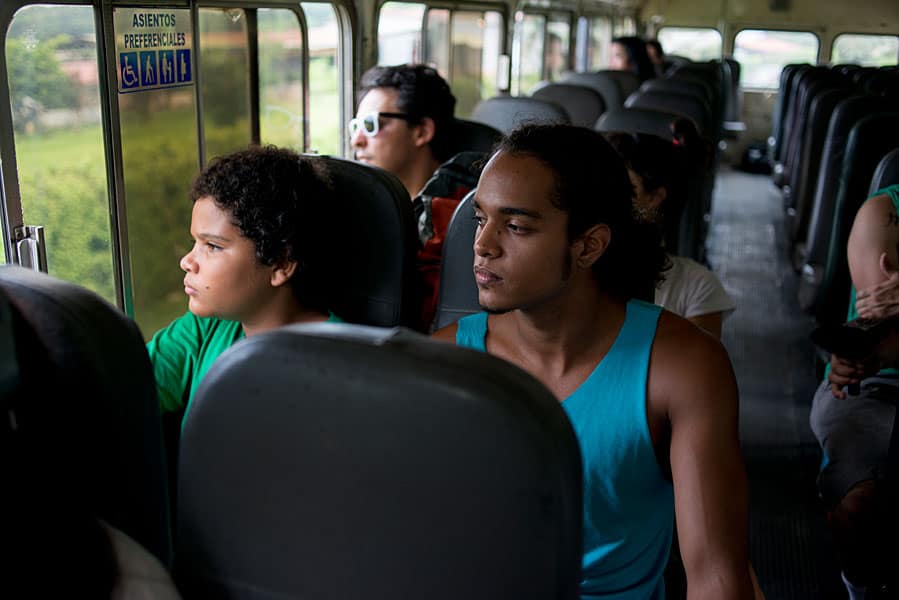In “Dos Aguas,” the brand-new film by Patricia Velázquez, three different languages are spoken: The elder caribeños speak patois, a local tourist speaks French, and everyone speaks Spanish. There is a certain beauty in this, hearing a single family speak and understand two different tongues at the dinner table. It quietly demonstrates the diversity of the Caribbean coast, the many different kinds of people who have mingled on these oft-ignored shores.
This is just one of the themes Velázquez wants to explore. Her film concerns a young boy named Nató, who dreams of becoming a professional soccer player. He’s short and stout, and he plays poorly on the field, despite his love for the game. His older brother owes money to local drug smugglers, so he resolves to rob a French tourist.
There you have it: poverty, narcotics, and petty theft, as well as some class tension between Euro-friendly hotel owners and the Afro-Caribbean locals. As the introductory text explains, “Dos Aguas” is a reference to a local phenomenon in which the ocean water becomes mysteriously buoyant, allowing cartels to deposit packages in the open sea and then pick up their floating booty later.
Velázquez is a very competent filmmaker, and much of the cinematography is breathtaking. She photographs the rain forest, the dirt roads, the dismal shacks, and the local haunts with a keen eye, and no detail is spared. As an audience, we feel the environment, its humid heat, its endless waves, its relieving breezes, even the sweetness of its freshly picked fruit. The film is vivid and tactile, an excellent complement to Esteban Ramírez’s “Caribe.”
But the film is less like a movie than a tone poem, and much of its narrative is vague and underdeveloped. The characters show almost no emotional depth. The acting is decent, even good, but Velázquez never asks them to show true rage, longing, melancholy, or fear. All these passions would make sense in such a trying situation, but none of them surface. Despite the death and betrayal that take place, only one person ever weeps, and she is filmed without sound. It seems astonishing that a scene in which Nató walks into a dark room and finds his family members bound with ropes would unfold without suspense. The characters shake off their troubles as easily as they shed their clothes before going for a swim.
That may be true to the súper tranquilo spirit of Caribbean life, but it makes for a staggeringly slow movie. “Dos Aguas” uses the mostly-visual storytelling that made Terrence Malick famous, but even Malick includes voiceovers to help establish what his characters are feeling.
Despite some weaknesses, “Dos Aguas” has proven Velázquez’s mettle, and hopefully she will have her chance at more films in the future. She has shed light on a serious problem without sensationalizing it, and through the eyes of an 11-year-old. That’s a good start. Next time, maybe she’ll stir our hearts as well.
For more information about “Dos Aguas,” including screening times, visit the film’s Facebook page.






